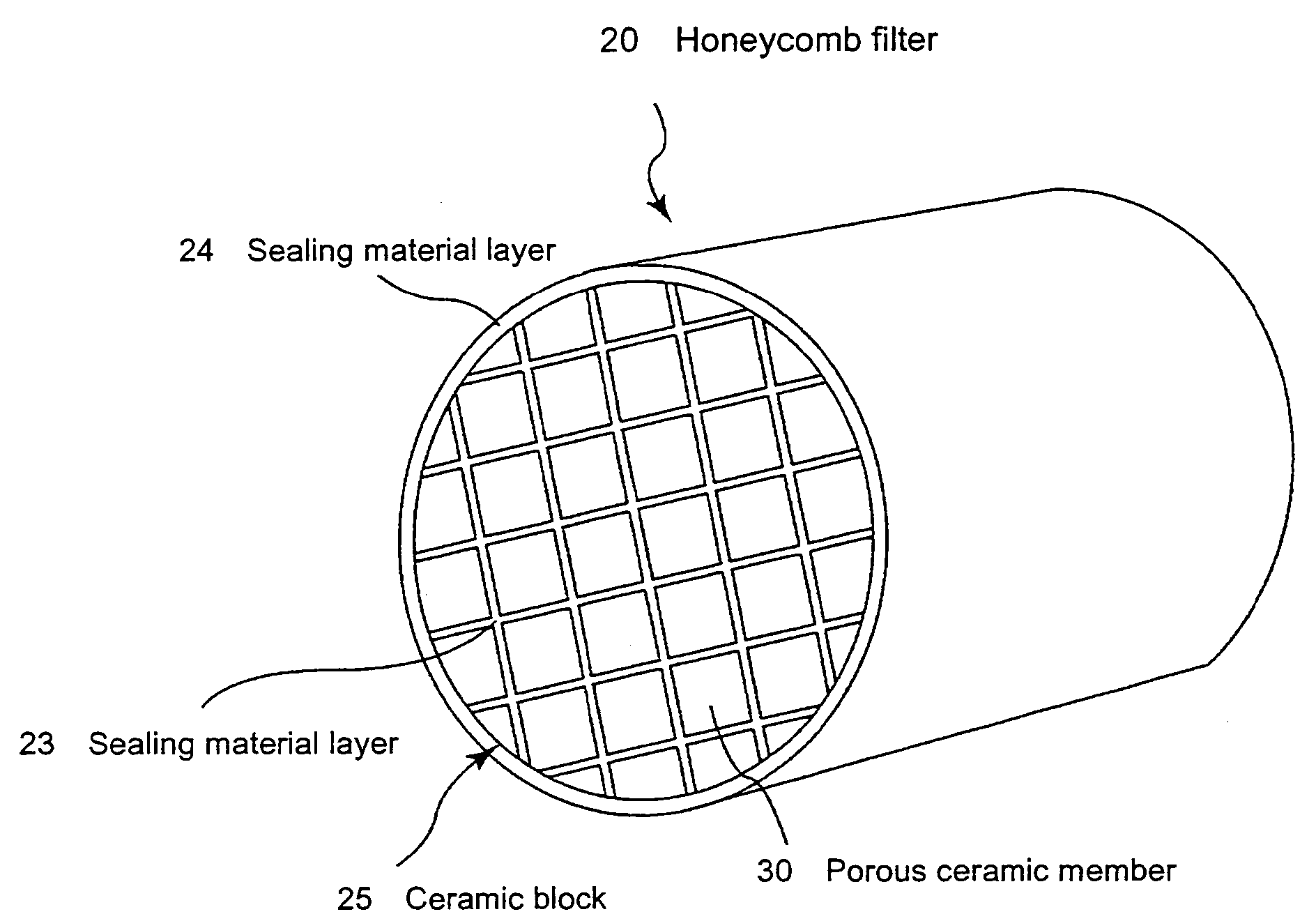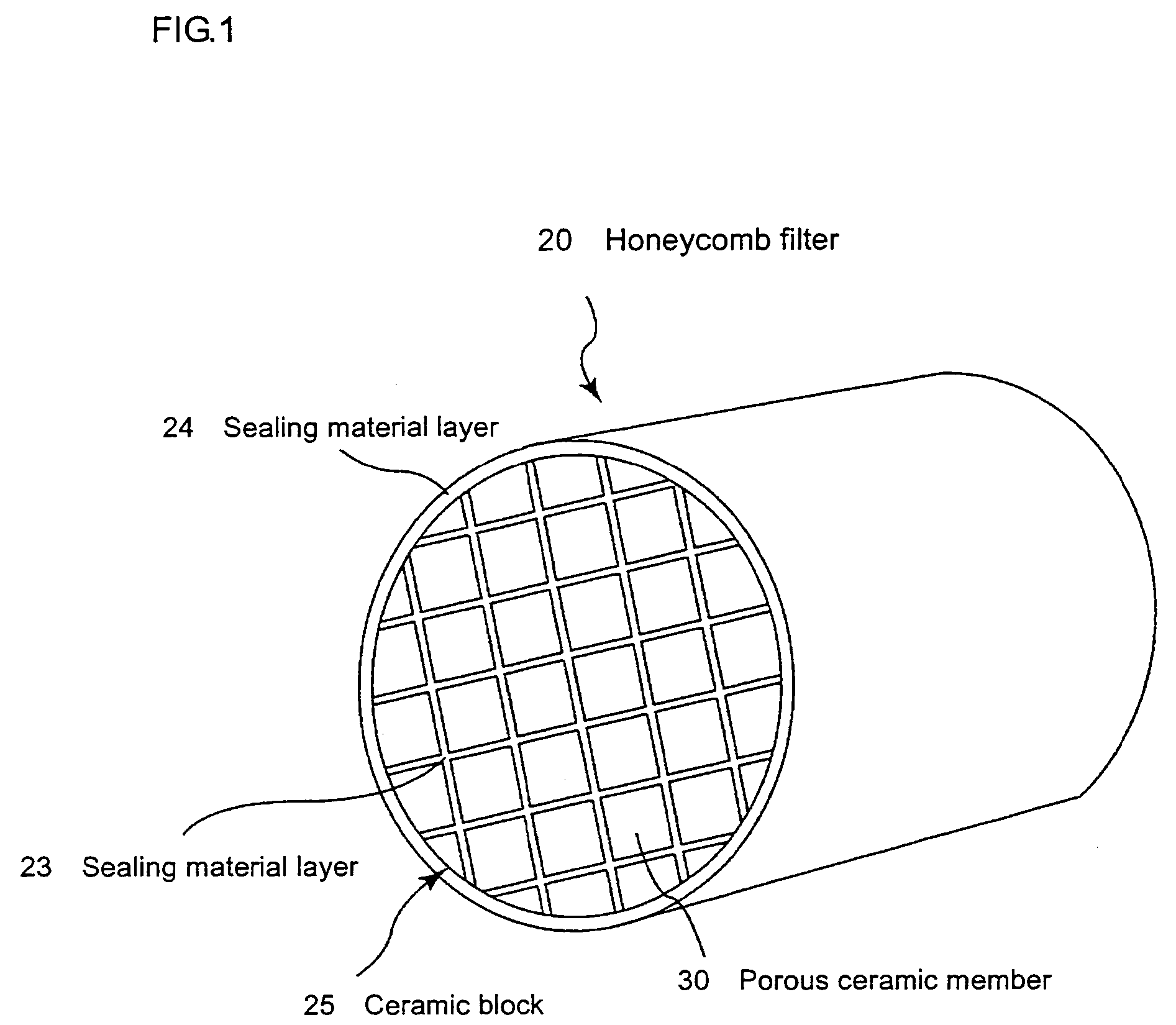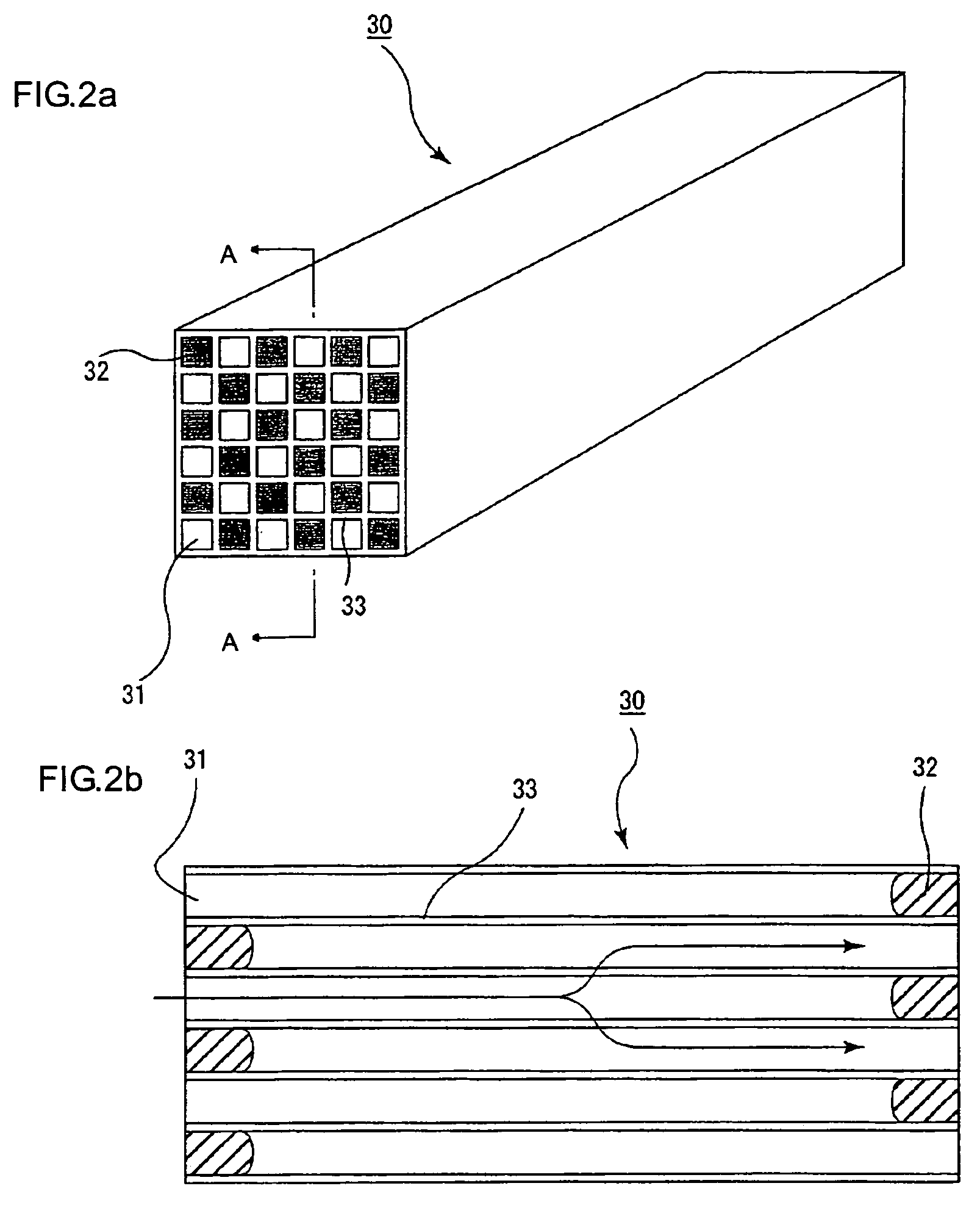Ceramic honeycomb structure
a ceramic honeycomb and structure technology, applied in ceramicware, physical/chemical process catalysts, separation processes, etc., can solve the problems of insufficient oxygen supply, insufficient catalytic reaction, and less site of catalyst coating layer with particulates, etc., to achieve excellent pressure loss and catching efficiency, and high catalytic reactivity. , the effect of effective structur
- Summary
- Abstract
- Description
- Claims
- Application Information
AI Technical Summary
Benefits of technology
Problems solved by technology
Method used
Image
Examples
example 1
[0135]In Example 1, sample groups A1-A7, . . . E1-E7 of ceramic members comprising of silicon carbide are prepared by changing pore size, pore size distribution and surface roughness, and a platinum-containing alumina coat layer is formed on the surface of the ceramic member to confirm the function and effect thereof. The production conditions of each sample are shown in Table 1.
[0136]The ceramic member in Example 1 is produced through the following steps (1)-(5).[0137](1) As a starting material, starting powder (silicon carbide) having a relatively large average particle size (hereinafter referred to as powder A) is first mixed with starting powder (silicon carbide) having a relatively small average particle size (hereinafter referred to as powder B).[0138](2) In order to prepare a ceramic member having a target pore size distribution, acryl resin particles having various shapes (density: 1.1 g / cm3) (which is called as powder C) is mixed with the starting powder of powder A and pow...
example 2
[0164]In Example 2, sample groups F1-F7, . . . J1-J7 of ceramic members comprising of silicon-silicon carbide composite are prepared by changing pore size, pore size distribution and surface roughness, and a platinum-containing alumina coat layer is formed on the surface of the ceramic member to confirm the function and effect thereof. The production conditions of each sample are shown in Table 2.
[0165]The ceramic member in Example 2 is produced through the following steps (1)-(5).[0166](1) As a starting material, starting powder (silicon carbide having a relatively large average particle size (hereinafter referred to as powder A) is first mixed with starting powder (metallic silicon) having a relatively small average particle size (hereinafter referred to as powder B).[0167](2) In order to prepare a ceramic member having a target pore size distribution, acryl resin particles having various shapes (density: 1.1 g / cm3) (which is called as powder C) is mixed with the starting powder o...
example 3
[0181]In Example 3, sample groups K1-K7, . . . O1-O7 of ceramic members comprising of cordierite are prepared by changing pore size, pore size distribution and surface roughness, and a platinum-containing alumina coat layer is formed on the surface of the ceramic member to confirm the function and effect thereof. The production conditions of each sample are shown in Table 3.
[0182]The ceramic member in Example 3 is produced through the following steps (1)-(5).[0183](1) As a starting material are mixed 45 wt % of talc (average particle size: 10 μm), 15 wt % of kaolin (average particle size: 10 μm), 23 wt % of alumina (average particle size: 10 μm), 17 wt % of silica (average particle size: 10 μm). Thus is called as a cordierite starting powder.[0184](2) In order to prepare a ceramic member having a target pore size distribution, acryl resin particles having various shapes (density: 1.1 g / cm3) (which is called as powder C) is mixed with the cordierite starting powder at a given mixing ...
PUM
 Login to View More
Login to View More Abstract
Description
Claims
Application Information
 Login to View More
Login to View More - R&D
- Intellectual Property
- Life Sciences
- Materials
- Tech Scout
- Unparalleled Data Quality
- Higher Quality Content
- 60% Fewer Hallucinations
Browse by: Latest US Patents, China's latest patents, Technical Efficacy Thesaurus, Application Domain, Technology Topic, Popular Technical Reports.
© 2025 PatSnap. All rights reserved.Legal|Privacy policy|Modern Slavery Act Transparency Statement|Sitemap|About US| Contact US: help@patsnap.com



